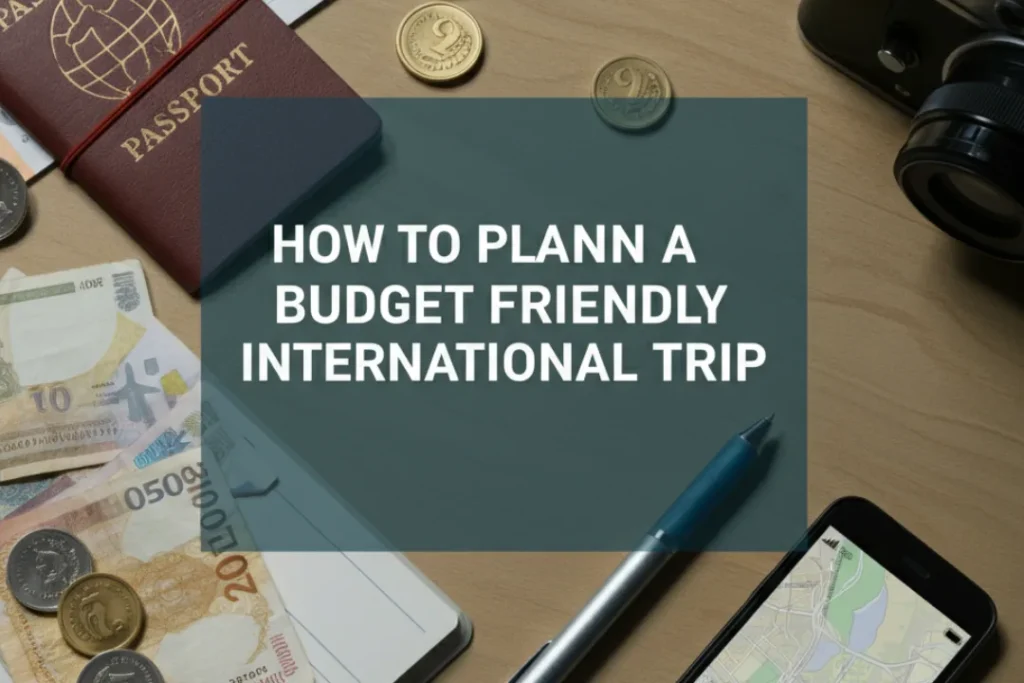Dreaming of exploring new countries, tasting local flavors, and soaking up vibrant cultures? You don’t have to spend a fortune to make those dreams come true. With some thoughtful planning and creativity, anyone can experience an unforgettable adventure on a tight budget. Here’s a guide packed with practical advice and real-world tips on how to plan a budget-friendly international trip from start to finish.
Choosing Where and When to Go
The destination you choose can make or break your budget. Some countries, like Thailand, Vietnam, or Poland, offer incredible experiences for less and let your currency go much further. Research places where daily costs like food and transport are low.
Timing matters, too. Flying out just before or after busy travel seasons—think late spring or early fall—will usually mean cheaper flights and accommodations. Look up local holidays and festivals, as prices can skyrocket when demand surges.
Building a Travel Budget That Works
Money worries can quickly ruin a trip. Avoid stress by listing out your biggest expenses, such as plane tickets, hotels, meals, and fun activities. Don’t forget to add the little things—buses, metro rides, snacks, entry fees, and of course, emergency cash.
Pin Down Your Daily Costs
Search for sample menus, hostel prices, and attraction tickets online for your chosen destination. This helps you set a realistic daily allowance that covers everything from breakfast to a late-night coffee. Many budget travelers get by on $40–$60 a day in affordable countries, but rates can be both lower and higher.
Don’t Overlook Pre-Trip Spending
There’s more than just your on-the-ground spending. Budget for essentials needed before you set off—vaccines, new backpacks, travel adapters, or visas can sneak up and eat into your funds fast.
Snagging Cheap Flights & Affordable Stays
Saving on flights and rooms frees up cash for better experiences. Flexibility is your friend—be ready to shift travel dates a bit and sign up for fare alerts.
- Flights: Mix and match airlines, check nearby airports, and try searching for tickets in “incognito mode” to avoid sudden price hikes. Avoid popular departure days like Fridays or Sundays.
- Place to Stay: Hostels, homestays, and rental apartments often beat hotels on price. Try cooking a few meals yourself with groceries from local markets—a major money-saver that’s also fun.
Eating Well and Having Fun for Less
Travel is all about experiences, not expensive tours. Sample food stalls, bakeries, and cafes where locals dine. You’ll get better prices—and tastier food.
- Bring a refillable water bottle to avoid constantly buying bottled drinks.
- Seek out free or “pay-what-you-wish” city tours.
- Get city cards for discounts on sights and public transport.
- Look up local events, free museum days, or just wander outdoor markets and parks.
Handling Money, Safety, and Travel Essentials
Don’t let money missteps or security issues catch you off guard. A little prep goes a long way.
How to Get the Best Exchange Rates
Skip airport kiosks. Use ATM withdrawals in your destination for better rates and fewer fees. Consider a debit or credit card made for travelers, with low or no international fees.
Travel Insurance Is a Must
You never think you’ll need it—until you do. The right travel insurance can save you from sky-high bills if you get sick or plans go sideways. Compare plans and pick one that covers health, luggage, and cancellations.
Backup Your Documents
Scan and save copies of your passport, visas, and insurance cards in your email or a secure cloud folder. Keep a paper copy somewhere safe—losing your docs in another country is the last thing you want.
Conclusion
Learning how to plan a budget-friendly international trip is your ticket to seeing the world without debt or stress. Choose wisely, keep an eye on the small stuff, and always leave space for spontaneous adventure. If you’re looking for extra inspiration or reliable guidance, sites like Lonely Planet are great resources for up-to-date travel tips and destination insights. You’ll not only spend less—you’ll come home with richer stories and lifelong memories.
Frequently Asked Questions
1. What’s the best way to save on international travel?
Travel to less expensive countries, go off-season, and be flexible with dates. Mix public transport, hostels, and local food for big savings.
2. How should I estimate my travel expenses?
Check prices for accommodation, food, and attractions in your destination before you leave. Add 10-15% for surprise costs to stay safe.
3. Any tips for cheap meals while abroad?
Eat where locals eat—at markets, food stalls, or small diners away from tourist areas. Cooking at your hostel or apartment helps you save even more.
4. Debit card, cash, or credit card overseas?
A combination works best. Use a travel credit card for main purchases, and withdraw small amounts of cash in-country for day-to-day needs.
5. When should I buy international plane tickets?
Aim to book flights three to six months ahead for the best deals. Track prices and be ready to book when fares drop.
You may also read: How to Stay Healthy Without Exercise



